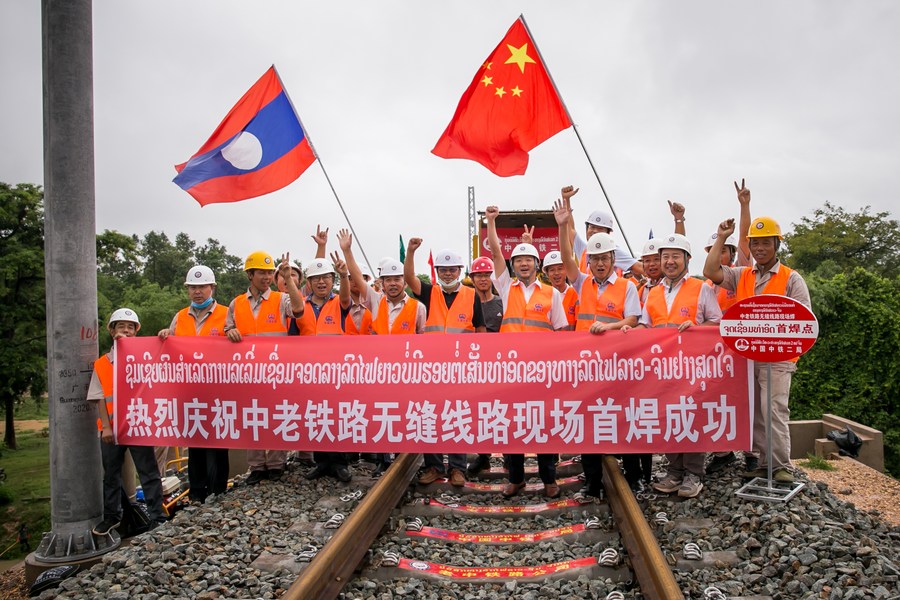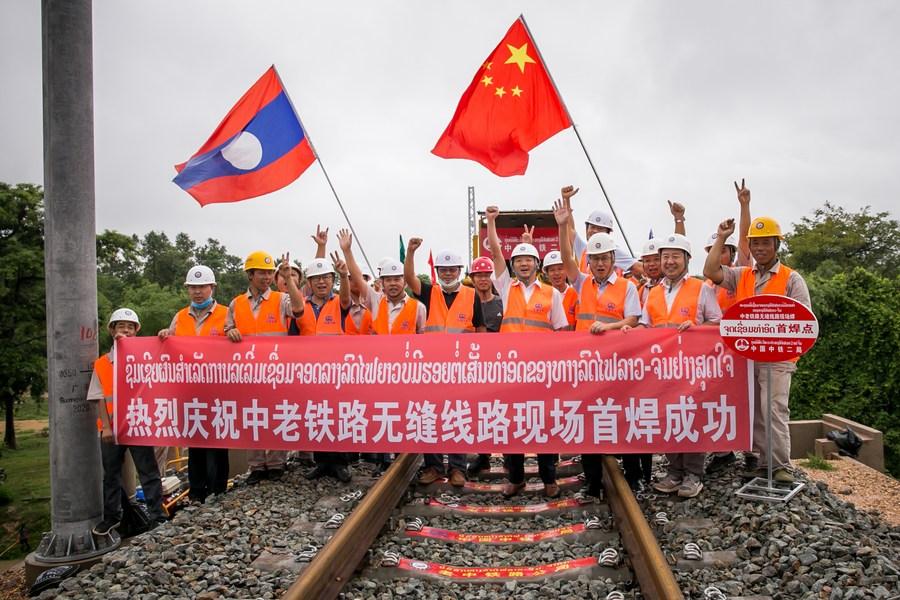
Workers from China Railway No.2 Engineering Group (CREC-2) pose for a group photo after welding the first seamless rails for the China-Laos railway in the northern suburb of Vientiane, Laos, on June 18, 2020. (Photo by Kaikeo Saiyasane/Xinhua)
BEIJING, Jan. 10 (Xinhua) -- China has continued a steady increase in the scale of its international development cooperation, giving high priority to the least developed countries in Asia and Africa and developing countries participating in the Belt and Road Initiative, according to a white paper issued Sunday by the State Council Information Office.
China has steadily increased the scale and further expanded the scope of its foreign aid, said the white paper titled "China's International Development Cooperation in the New Era."
From 2013 to 2018, China allocated a total of 270.2 billion yuan (about 41.4 billion U.S. dollars) for foreign assistance in three categories -- grants, interest-free loans, and concessional loans, it said.
Grants of 127.8 billion yuan, accounting for 47.3 percent of the total, mainly went to help other developing countries build small and medium-sized social welfare projects and to fund projects for cooperation in human resources development, technical cooperation, material assistance, and emergency humanitarian assistance, as well as projects under the South-South Cooperation Assistance Fund.
Interest-free loans were 11.3 billion yuan, constituting 4.18 percent of the total, while concessional loans of 131.1 billion yuan made up 48.52 percent of the total, according to the white paper.
In addition to undertaking complete projects, providing goods and materials, and conducting technical cooperation, China set up the South-South Cooperation Assistance Fund in 2015 to launch development cooperation programs, and continues to explore new models and methods of foreign aid, it said.
To better adapt to the new circumstances, China has reformed its foreign aid systems and mechanisms to improve management and promote international development cooperation in the new era, according to the white paper.




 A single purchase
A single purchase









